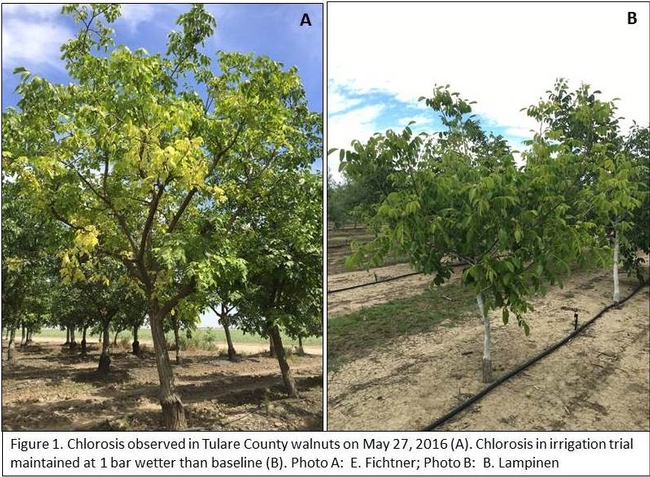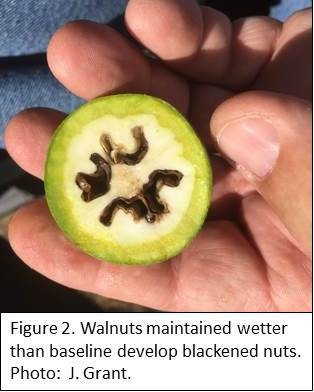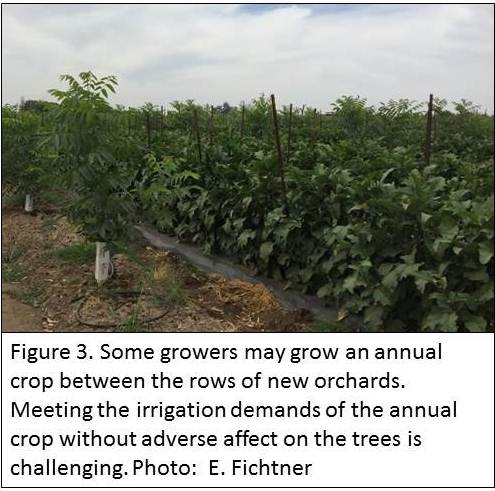Although over-irrigation may seem like an unlikely diagnosis after an extended drought, the foliar chlorosis observed in Tulare County walnut blocks in late May and early June are identical to symptomology in research blocks maintained wetter than baseline (Figure 1). In research plots, foliar chlorosis occurs within just days of an excessive irrigation event. Note that the yellowing associated with overwatering affects all of the leaves on a shoot down to the nuts (i.e. neoformed leaves that were formed in the current season). In contrast, newly emerging leaves may initially appear yellow; however, they gradually turn to green three or four leaves back from the growing tip. Over-irrigated walnut trees in research plots also have a tendency to drop one of two nut doubles, resulting in lower overall nut retention in the canopy. When this situation is occurring, you can grasp a number of pairs of double nuts on the tree and one of each pair will often come loose with almost no force. These nuts will exhibit blackening while still on the tree (Figure 2) and squirt water vigorously when cut. Anaerobic conditions in the root zone may cause root rot which may lead to overall tree decline and mortality.
For more information on this topic, please visit the June 2016 In a Nutshell newsletter.


